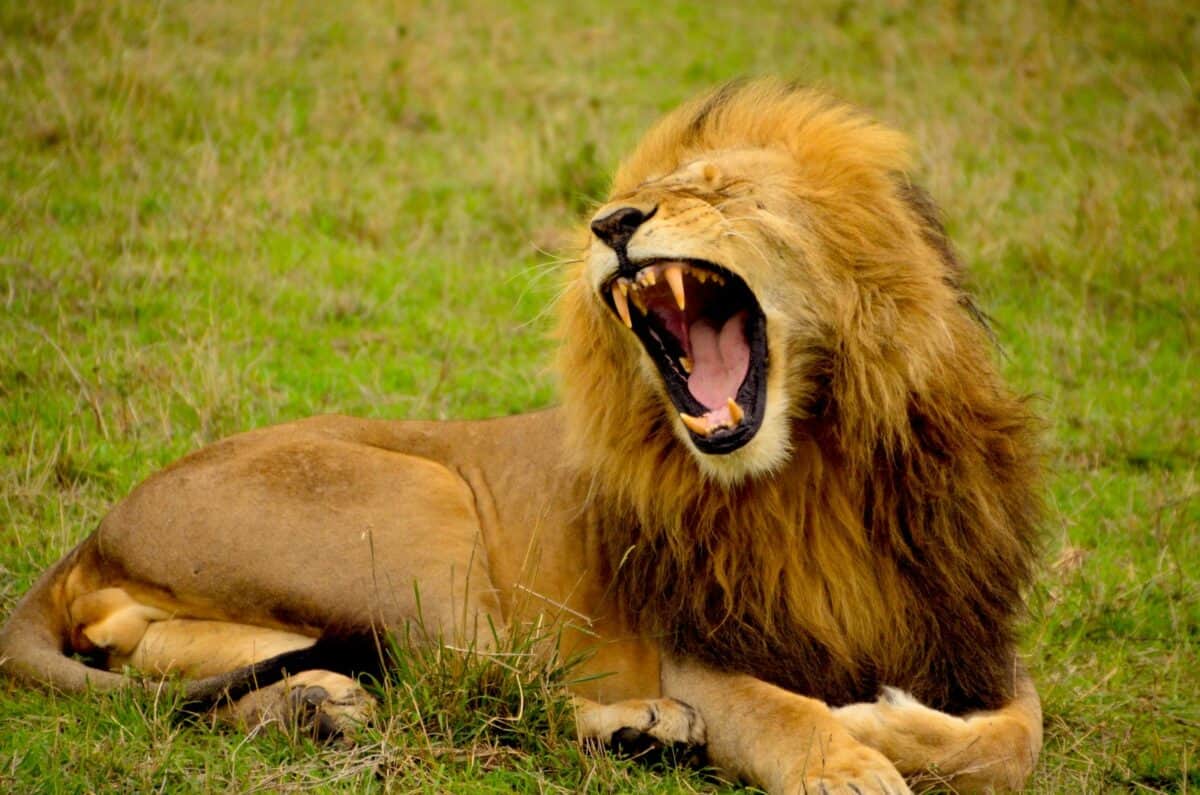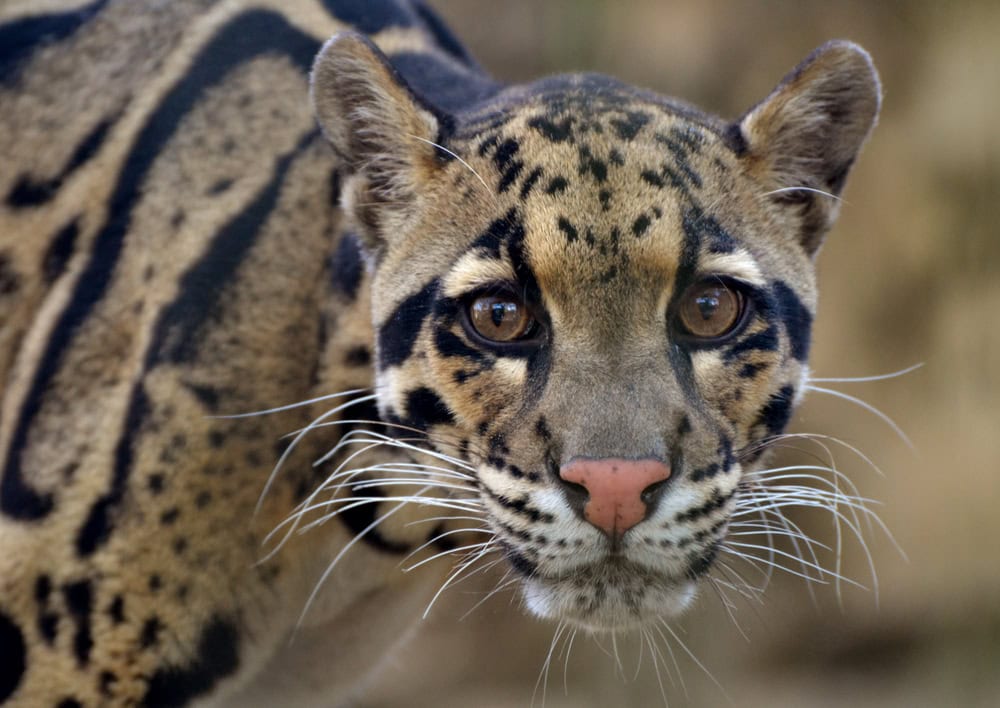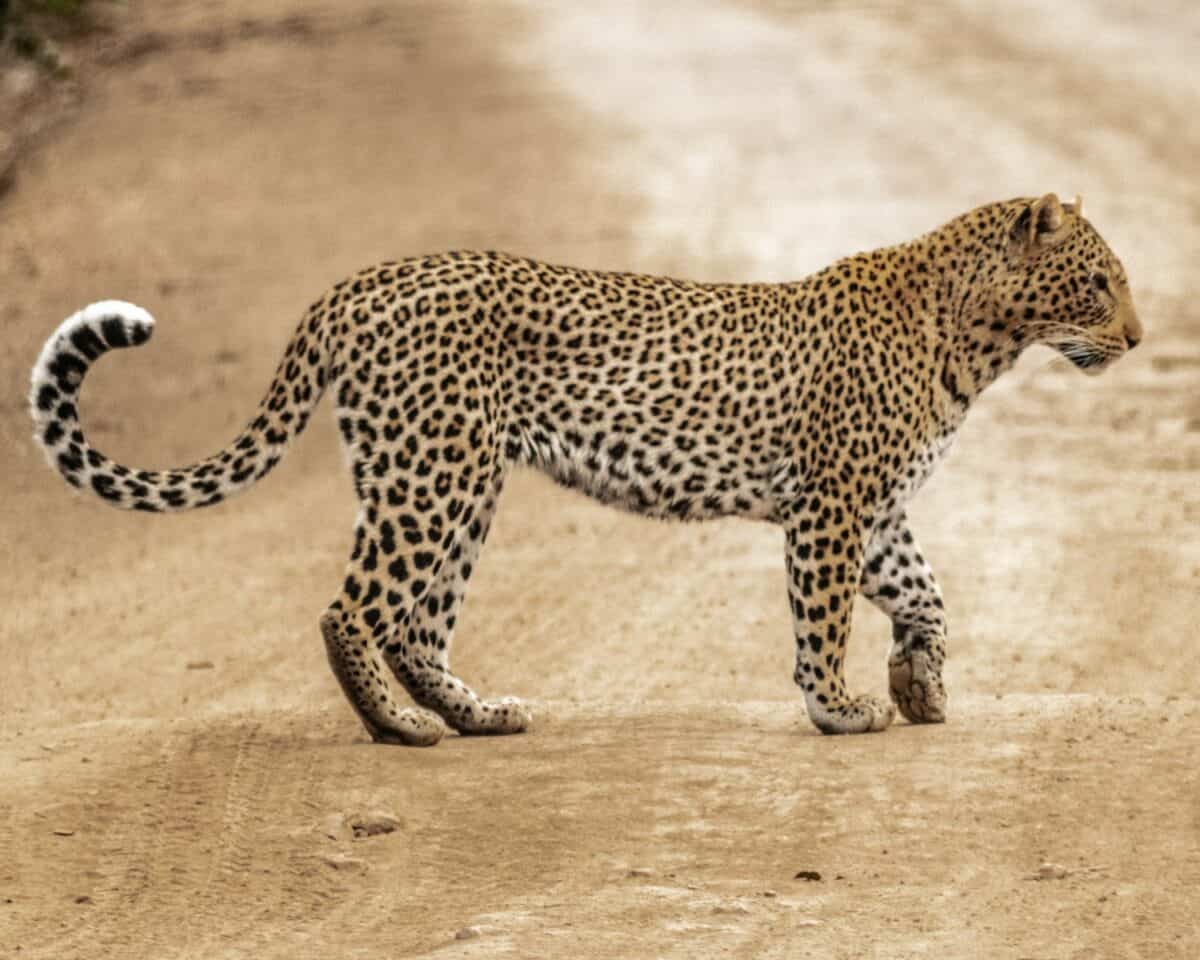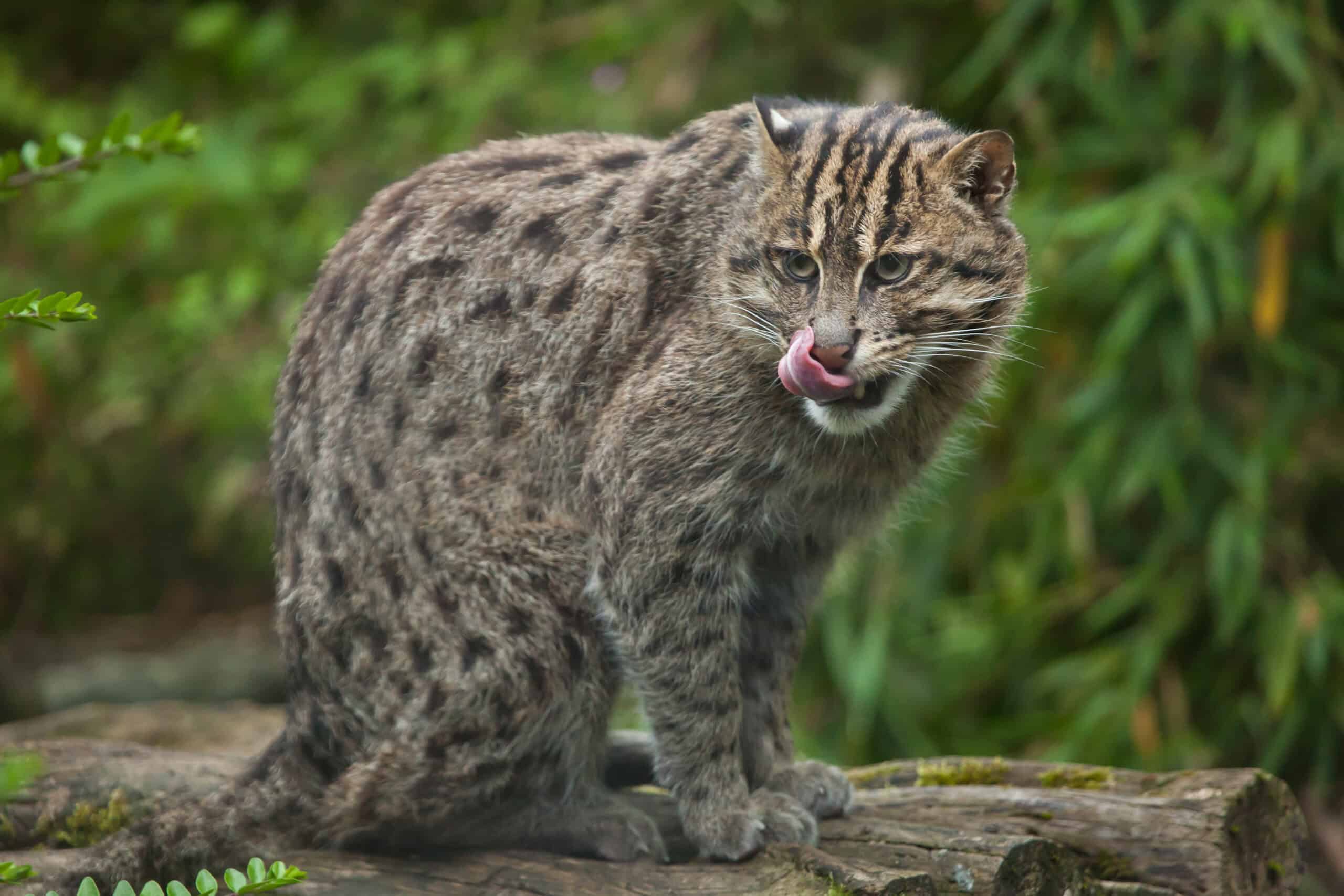In the wild, big cats rule as apex predators thanks to their incredible hunting skills, strength, and agility. While we often think of these magnificent predators hunting prey similar to their size, the reality is far more impressive. Some big cats tackle prey that significantly outweighs them, sometimes by two, three, or even ten times their body weight. This remarkable ability sets them apart in the animal kingdom and demonstrates their evolutionary perfection as hunters. Let’s explore thirteen big cats that can successfully bring down prey much larger than themselves, examining the specialized adaptations and hunting strategies that make these incredible feats possible.
African Lion The Pride Hunter

The African lion (Panthera leo) stands as an iconic symbol of strength in the animal kingdom. Weighing between 330-550 pounds for males and 265-395 pounds for females, these big cats routinely take down prey that dwarf them in size. African buffalo weighing up to 1,500 pounds, giraffes reaching 2,600 pounds, and even young elephants are all potential targets. What makes this possible is their cooperative hunting strategy—lions typically hunt in prides, with females doing most of the hunting while males defend the territory. This teamwork allows them to surround, ambush, and overwhelm animals that would be impossible to tackle alone. Their powerful jaws exert approximately 650 pounds per square inch (psi) of bite force, enabling them to crush windpipes and suffocate their large prey. Lions use a signature killing technique of clamping their jaws around the throat or muzzle of prey, cutting off air supply rather than relying solely on the impact of the initial attack.
Tiger The Solitary Giant Killer

As the largest living cat species, the tiger (Panthera tigris) hunts with a blend of brute force and tactical precision. Male Siberian tigers can weigh up to 660 pounds, yet routinely hunt prey like wild boar, sambar deer, and adult gaur—the largest wild cattle species, which can weigh over 2,000 pounds. Unlike lions, tigers hunt alone, making their ability to take down massive prey even more impressive. They rely on ambush tactics, using their striped coat as camouflage in tall grass and forest undergrowth. With a bite force of approximately 1,050 psi (stronger than any other big cat), tigers can crush the vertebrae of large ungulates with a single, precisely targeted bite to the neck. Their powerful forelimbs, equipped with retractable claws, allow them to grapple and bring down animals much heavier than themselves. Tigers are also exceptional swimmers and will readily pursue prey into water, giving them hunting capabilities that many other big cats lack.
Jaguar The Skull Crusher

The jaguar (Panthera onca) might be the third largest cat in the Americas, weighing between 120-300 pounds, but it possesses the strongest bite force relative to size of any big cat—approximately 1,500 psi. This tremendous jaw power allows jaguars to pursue prey that other predators cannot, including caimans, capybaras, and even adult cattle weighing over 1,000 pounds. What truly sets jaguars apart is their unique killing method: rather than suffocating prey by clamping the throat like other big cats, jaguars often deliver a single, devastating bite through the temporal bones of the skull directly into the brain. This distinctive technique allows them to efficiently dispatch prey regardless of size. Additionally, jaguars are excellent swimmers and climbers, hunting effectively in water, on land, and in trees. Their stocky, muscular build provides the strength needed to drag prey weighing twice their body weight up into trees to avoid competition from other predators and scavengers.
Leopard The Master of Adaptability

Leopards (Panthera pardus) are perhaps the most adaptable of all big cats, thriving in habitats ranging from rainforests to deserts. Weighing between 80-200 pounds, these relatively medium-sized cats regularly hunt prey up to 900 pounds, including large antelopes, warthogs, and even young giraffes. What makes leopards remarkable is not just their ability to kill large prey but to hoist carcasses weighing up to three times their body weight into trees. This incredible strength allows them to protect their kills from larger predators and scavengers. Leopards hunt using stealth and explosive speed, approaching to within 16 feet of prey before launching an attack. They generally kill larger prey with a precision bite to the throat that suffocates the animal. Their exceptional climbing ability, coupled with powerful shoulders and jaws, enables them to drag heavy carcasses up vertical tree trunks—a feat that astonishes even seasoned wildlife biologists. This adaptability in hunting and protecting their kills has allowed leopards to maintain the widest geographic range of any wild cat.
Cougar The Endurance Hunter

Also known as mountain lions or pumas, cougars (Puma concolor) are the fourth largest cat species in the world, weighing between 110-220 pounds. Despite their relatively slender build compared to other big cats, they routinely bring down prey such as elk, moose, and even adult horses weighing upwards of 800 pounds. What enables this impressive hunting prowess is the cougar’s exceptional endurance and extraordinary leaping ability. They can jump up to 18 feet vertically and 40 feet horizontally, allowing them to pounce on prey from significant distances. Unlike some other big cats that rely on ambush alone, cougars can pursue prey over long distances, wearing them down before delivering a fatal attack. Their preferred killing method involves a precisely targeted bite to the back of the neck to sever the spinal cord, or to the throat to suffocate larger prey. Cougars also possess powerful hind legs that enable them to drag prey weighing up to five times their weight considerable distances to secluded feeding areas, keeping their kills safe from other predators.
Snow Leopard The High-Altitude Specialist

Snow leopards (Panthera uncia) have evolved specialized adaptations for hunting in the harsh mountainous regions of Central Asia. Weighing between 60-120 pounds, these medium-sized cats routinely hunt blue sheep, ibex, and wild goats that can weigh up to 300 pounds. Their most remarkable adaptation is their incredible jumping ability—they can leap up to 50 feet horizontally, enabling them to close the distance on prey quickly in the Rocky Mountain terrain. Snow leopards have disproportionately large paws that act like natural snowshoes, distributing their weight on soft snow and providing better traction on icy surfaces. Their powerful legs and low center of gravity make them exceptionally stable on steep slopes, giving them an advantage when hunting mountain-dwelling prey. Additionally, snow leopards possess the longest tail relative to body size of any cat, up to 3 feet long, which acts as a counterbalance during jumps and helps maintain stability when pursuing prey across treacherous mountain slopes. These adaptations enable them to successfully hunt prey much larger than themselves in one of the world’s most challenging environments.
Clouded Leopard The Arboreal Ambusher

The clouded leopard (Neofelis nebulosa) might be one of the smaller big cats, weighing just 35-50 pounds, but it possesses physical adaptations that make it capable of taking down prey several times its size. Most notably, clouded leopards have the longest canine teeth relative to skull size of any modern carnivore, comparable to the extinct saber-toothed cats. These impressive teeth, measuring up to 2 inches long, allow them to deliver a fatal bite to the neck of larger prey animals like wild pigs, deer, and adult monkeys weighing up to 150 pounds. They are perhaps the most accomplished climbers among big cats, with flexible ankle joints that can rotate 180 degrees, enabling them to descend trees headfirst like a squirrel. Their short, powerful limbs and low center of gravity give them exceptional stability on branches, allowing them to stalk and ambush prey from above. Additionally, their exceptionally long tail, nearly matching their body length, provides crucial balance when navigating the forest canopy, making them lethal hunters both in trees and on the ground.
Cheetah The Specialized Sprinter

While cheetahs (Acinonyx jubatus) are known primarily for their speed rather than brute strength, these 70-140 pound cats routinely bring down prey weighing up to 250 pounds. Their hunting strategy differs markedly from other big cats—instead of relying on ambush, cheetahs use their unmatched acceleration (0 to 60 mph in under three seconds) and top speed (up to 75 mph) to chase down prey in open grasslands. What makes them capable of taking down larger animals is their specialized adaptations: semi-retractable claws that function like cleats for traction, enlarged nostrils and lungs for increased oxygen intake, and an unusually flexible spine that acts as a spring during running. When catching larger prey like wildebeest calves or adult gazelles, cheetahs employ a technique of tripping the animal by striking its hindquarters or legs. Once the prey is down, they deliver a suffocating bite to the throat—a technique that allows them to overcome animals twice their weight despite having a relatively weak bite force compared to other big cats. Their slender build and lightweight frame, which enable their incredible speed, mean cheetahs must eat quickly before larger predators steal their kills.
Eurasian Lynx The Forest Phantom

The Eurasian lynx (Lynx lynx) is the largest of the lynx species, weighing between 40-80 pounds, yet is capable of hunting prey up to 300 pounds. Despite their modest size, these powerful cats regularly take down adult deer, chamois, and even young elk that significantly outweigh them. Several adaptations make this possible: their exceptionally powerful hind legs allow them to launch attacks with explosive force, leaping up to 25 feet horizontally to pounce on prey. Their broad, fur-covered paws act as natural snowshoes, giving them a crucial advantage when hunting in deep snow where larger prey animals struggle to move efficiently. Eurasian lynx have specialized hunting techniques for larger prey—they stalk to within striking distance, then deliver a series of deep bites to the neck, severing the spinal cord or suffocating the animal. Their tufted ears provide enhanced hearing that can detect prey movements under snow or leaves, while their beard-like ruff protects the throat during close-quarter struggles with large prey. These combined adaptations make the Eurasian lynx one of the most efficient hunters in northern forests, capable of regularly taking down animals several times their size.
Caracal The Airborne Hunter

The caracal (Caracal caracal) weighs a modest 25-40 pounds, yet these medium-sized cats routinely hunt prey up to 90 pounds, including adult gazelles and young antelopes. What makes this possible is the caracal’s extraordinary leaping ability—they can jump up to 10 feet vertically from a standing position, allowing them to catch birds in mid-flight and launch surprise attacks on larger terrestrial prey. Their powerful hind legs provide explosive acceleration, enabling them to reach speeds of up to 50 mph in short bursts. Caracals have specialized adaptations for hunting in their arid habitat: large, highly mobile ears with over 20 muscles allow precise sound localization, while their compact, muscular build gives them exceptional strength relative to size. When hunting larger mammals, caracals employ stealth and ambush tactics, using their speed and powerful bite to quickly dispatch prey by severing the spinal cord or crushing the windpipe. Their distinctive black ear tufts may act as visual cues during hunting or communicate with other caracals. This combination of adaptations makes the caracal capable of taking down prey more than twice its weight—an impressive feat for a mid-sized cat.
Fishing Cat The Aquatic Specialist

The fishing cat (Prionailurus viverrinus) represents a unique adaptation among felines. Weighing between 18-35 pounds, these specialized hunters can take down prey twice their size, including large fish weighing up to 30 pounds, water birds, and even small deer or calves weighing up to 70 pounds. Their most remarkable adaptations are for aquatic hunting: a water-resistant double-layered coat, webbed feet, and the unusual ability to swim underwater with ease. Their dense undercoat traps air for insulation and buoyancy, while the outer guard hairs are waterproof. Fishing cats have specialized techniques for hunting larger prey—they can dive completely underwater to grab large fish and have been observed “fishing” by tapping the water’s surface to mimic insect movements, attracting fish that they then catch with lightning-fast paw strikes. When hunting terrestrial prey, they employ typical feline ambush tactics but can also use water as hunting cover, emerging suddenly to surprise animals drinking at the shore. Their short, muscular tail acts as a rudder when swimming, while their eyes are positioned higher on the head than most cats, allowing them to see while partially submerged. These adaptations make fishing cats formidable predators in wetland ecosystems, capable of taking down surprisingly large prey.
Serval The Precision Hunter

The serval (Leptailurus serval) might weigh just 20-40 pounds, but these slender African cats can take down prey nearly twice their size, including antelopes, flamingos, and young gazelles weighing up to 60 pounds. What enables this remarkable hunting ability is their specialized physiology: servals possess the longest legs relative to body size of any cat, giving them an exceptional height advantage and allowing them to see over tall grasses. They have the largest ears relative to head size of any cat, capable of detecting the movements of prey hidden in dense vegetation or underground. The serval’s most distinctive hunting technique is the “leap and stun”—they can jump up to 10 feet vertically and land with precision on small prey like rodents, using their forepaws to stun or kill the animal on impact. For larger prey, servals employ stealth and explosive speed, reaching up to 50 mph in short bursts. Their exceptionally mobile spine allows them to change direction mid-chase, while their elongated neck provides the leverage needed to deliver a powerful killing bite to larger animals. These adaptations, combined with their incredible hearing that can detect underground prey, make servals surprisingly effective hunters of larger animals despite their modest size.
Ocelot The Nocturnal Tactician

Ocelots (Leopardus pardalis) typically weigh between 18-35 pounds, yet these medium-sized cats can take down prey weighing up to 60 pounds, including peccaries, agoutis, and young deer. Their success with larger prey stems from several specialized adaptations: large, forward-facing eyes with a reflective layer that provides exceptional night vision, allowing them to hunt effectively in complete darkness when larger animals are active. Ocelots have proportionally longer canine teeth than many similarly sized cats, enabling them to deliver a decisive killing bite to larger prey. Their distinctive hunting strategy involves methodical stalking—they can move with complete silence through dense undergrowth, freezing in position for extended periods while waiting for the perfect moment to strike. When tackling larger prey, ocelots target the back of the neck to sever the spinal cord or clamp onto the throat to suffocate the animal. Their extremely flexible spine allows them to maneuver efficiently in tight spaces, while their powerful hind legs provide explosive acceleration for the final attack. Additionally, ocelots are excellent climbers and will often ambush prey from elevated positions, using gravity to increase the force of their initial strike. These combined adaptations make ocelots surprisingly effective hunters of animals significantly larger than themselves.
Conclusion: The Remarkable Adaptations That Enable Big Cats to Tackle Large Prey

The ability of big cats to take down prey many times their size represents one of nature’s most remarkable evolutionary achievements. This capability stems from millions of years of specialized adaptations that have perfected these predators for their ecological roles. While their hunting strategies differ—from the cooperative tactics of lions to the explosive speed of cheetahs—all share certain key adaptations: powerful jaw muscles and specialized dentition for delivering killing bites, muscular forelimbs with retractable claws for grappling with larger animals, and heightened senses
- 10 Animals That Use Camouflage Best - August 17, 2025
- 13 Wild Birds That Use Tools to Hunt - August 17, 2025
- 9 Smartest Animal Species in North America—And Why They’re So Clever - August 17, 2025

